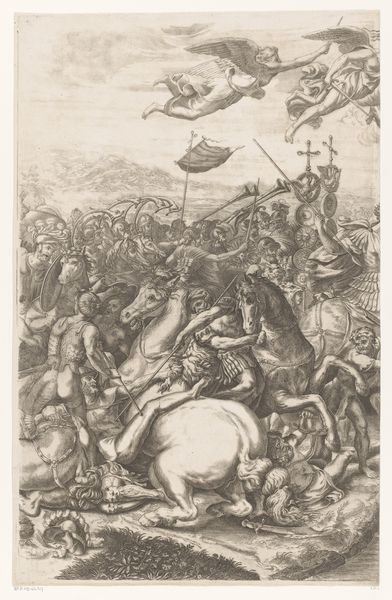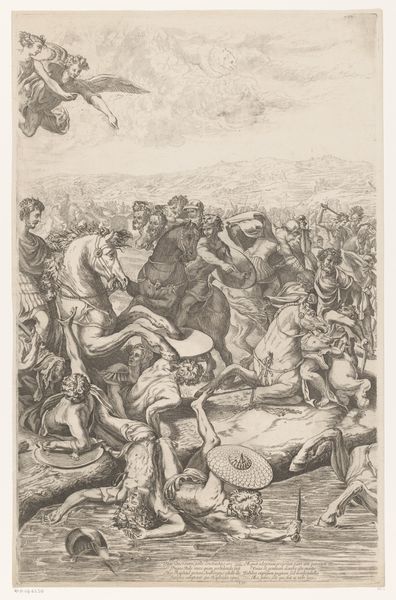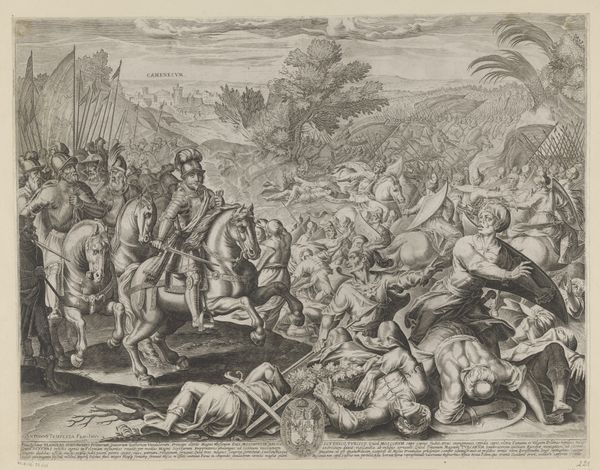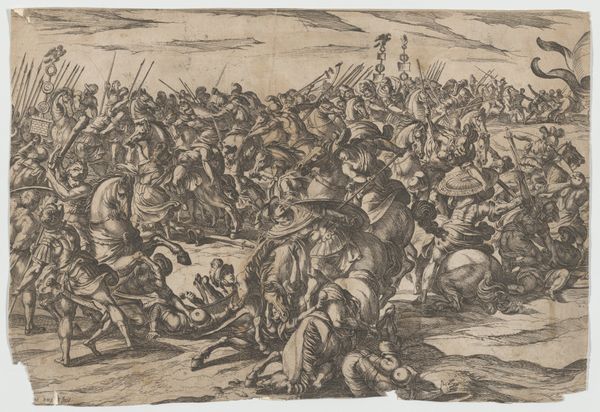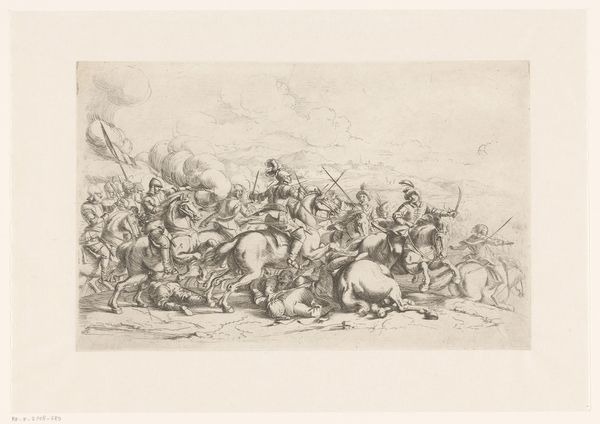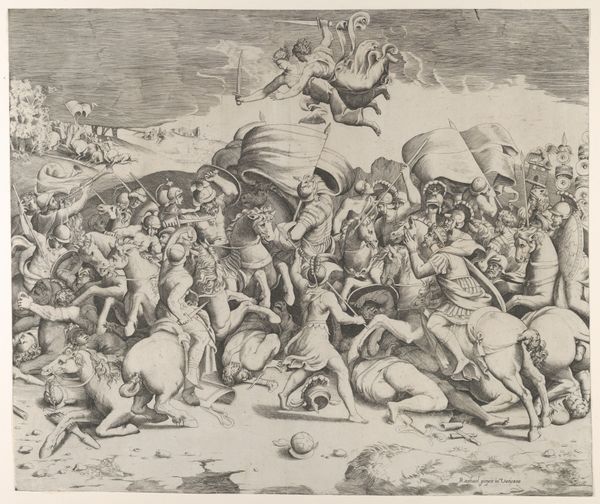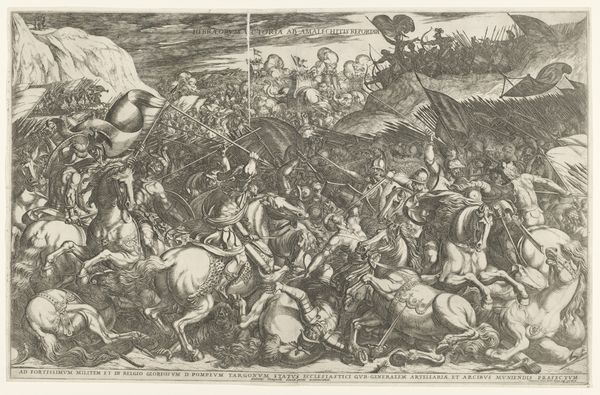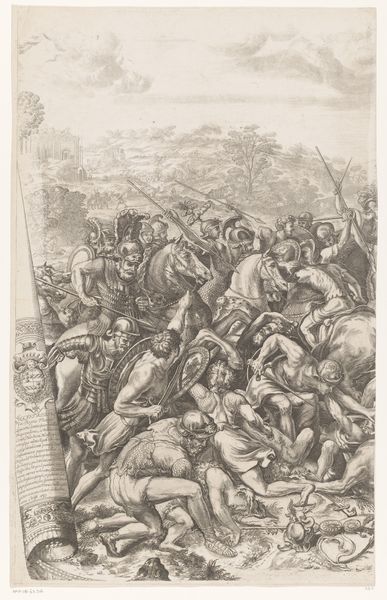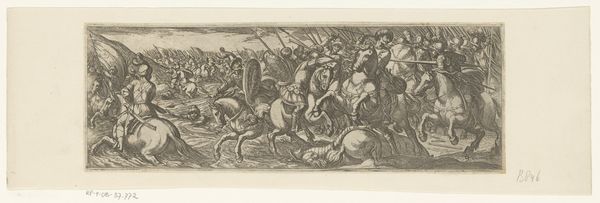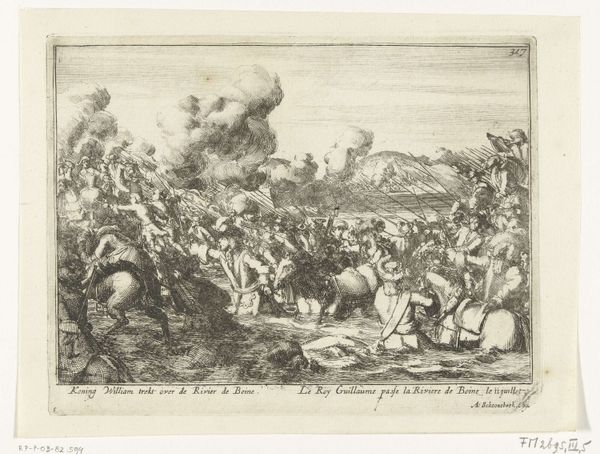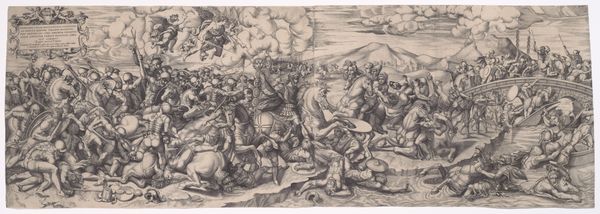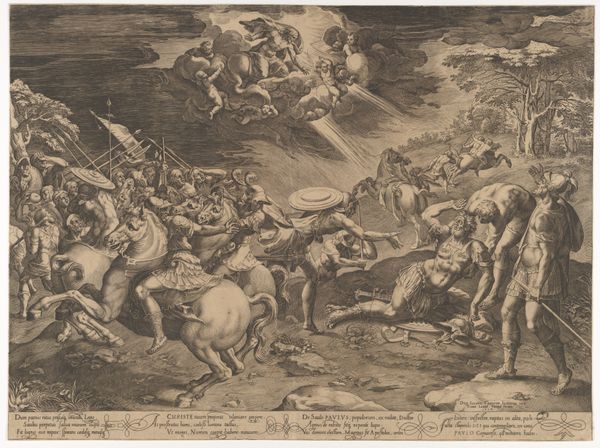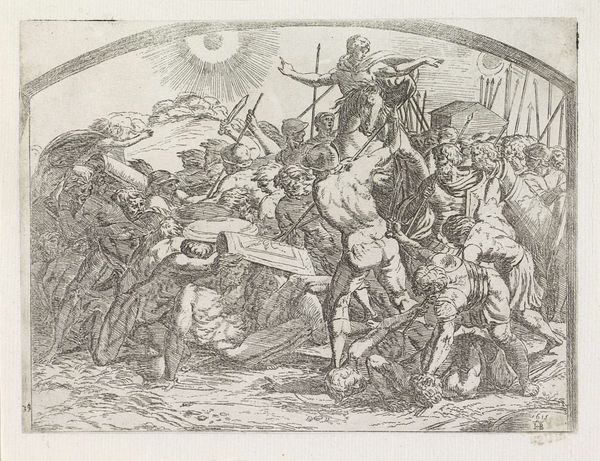
drawing, print, etching, intaglio, ink, pen
#
drawing
#
ink drawing
#
narrative-art
#
baroque
#
pen drawing
# print
#
etching
#
intaglio
#
landscape
#
figuration
#
ink
#
pen work
#
pen
#
history-painting
Copyright: Rijks Museum: Open Domain
Curator: Here we have Pierre Scalberge's "Battle of the Milvian Bridge," made in 1637. What are your initial thoughts on this dramatic scene? Editor: It’s chaotic! All those tangled bodies and frantic gestures create a real sense of urgency. It makes me think about the physical labor involved in war, but also the craftsmanship used to depict it here in ink. Curator: Absolutely. Scalberge created this using pen, ink and etching. Consider how he represents power through the lens of religious conflict, particularly Emperor Constantine's victory, which shifted the political and spiritual landscape of the Roman Empire. This resonates with later conflicts viewed through similar religious-political frameworks. Editor: You're right, but looking at it through a materialist lens, how did the printing process itself – the act of making multiples – affect the dissemination and understanding of the narratives surrounding battles like this? Consider how it also impacts on labour-- from artisans producing drawings, printing plates and paper through to the eventual end users. Curator: That's a key point. The print medium democratized access to historical narratives, though arguably through a biased lens shaped by the artist and their patrons. The focus on Constantine can also highlight the construction of "heroic" figures and the simplification of complex conflicts for political messaging. It would be easy to make comparisons to modern media. Editor: I’m also curious about the specific materials and the socio-economic implications surrounding their procurement. Where was the ink sourced? Who made the paper? And how might this production relate to broader colonial trade routes and material exchanges of that time? Curator: Indeed, examining the artwork’s origins exposes interconnected global systems of labor and resource extraction. This goes beyond the immediately visible themes of religion and conflict to highlight historical economic inequalities. It complicates this scene of "triumph" by underlining these ethical implications. Editor: Well, looking at it now with this context, what was a battle becomes a testament to human industry, belief and the inequalities it hides, all pressed onto paper through skilled labor. It is anything but simple, no matter its initial purpose!
Comments
No comments
Be the first to comment and join the conversation on the ultimate creative platform.
